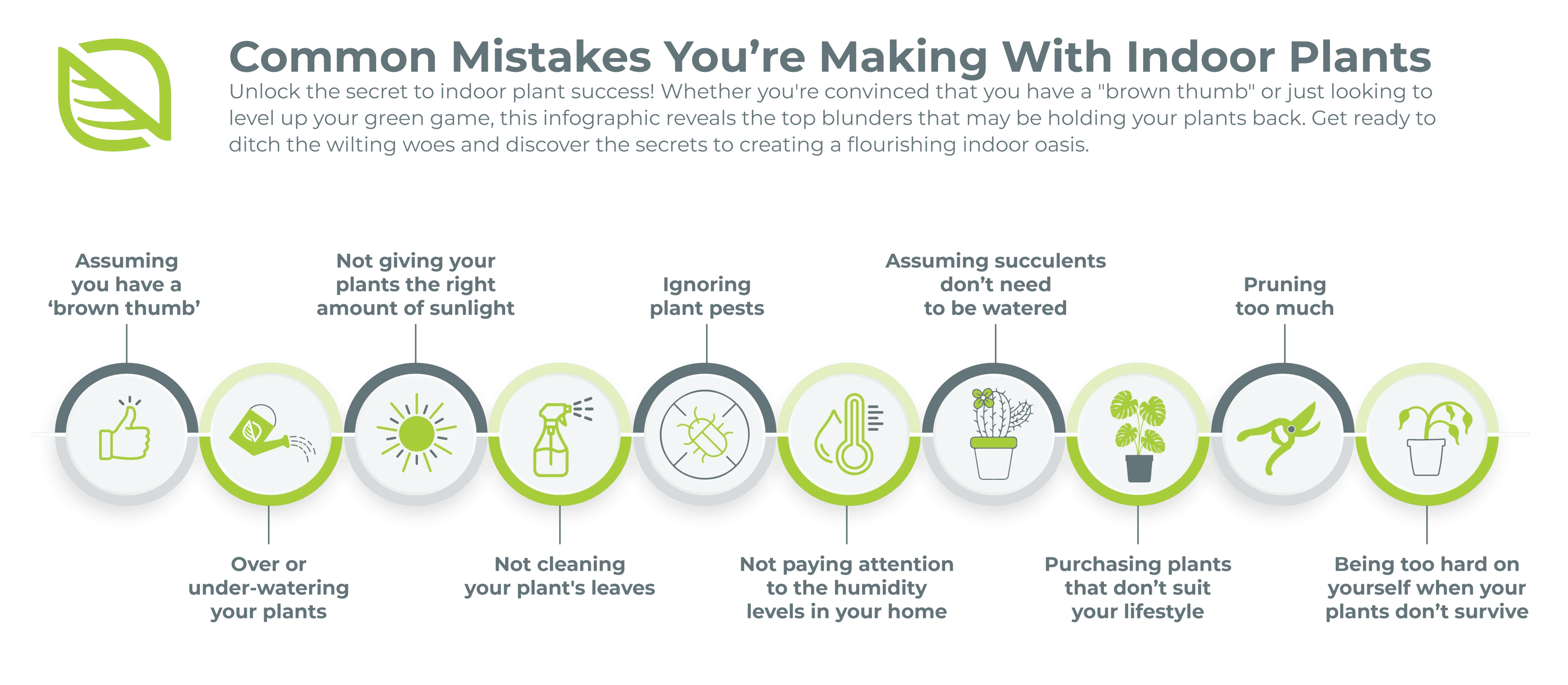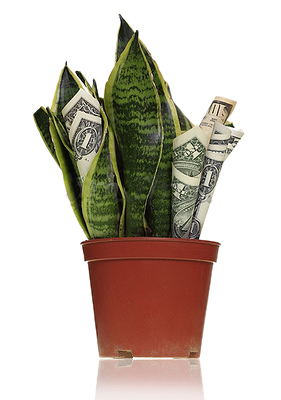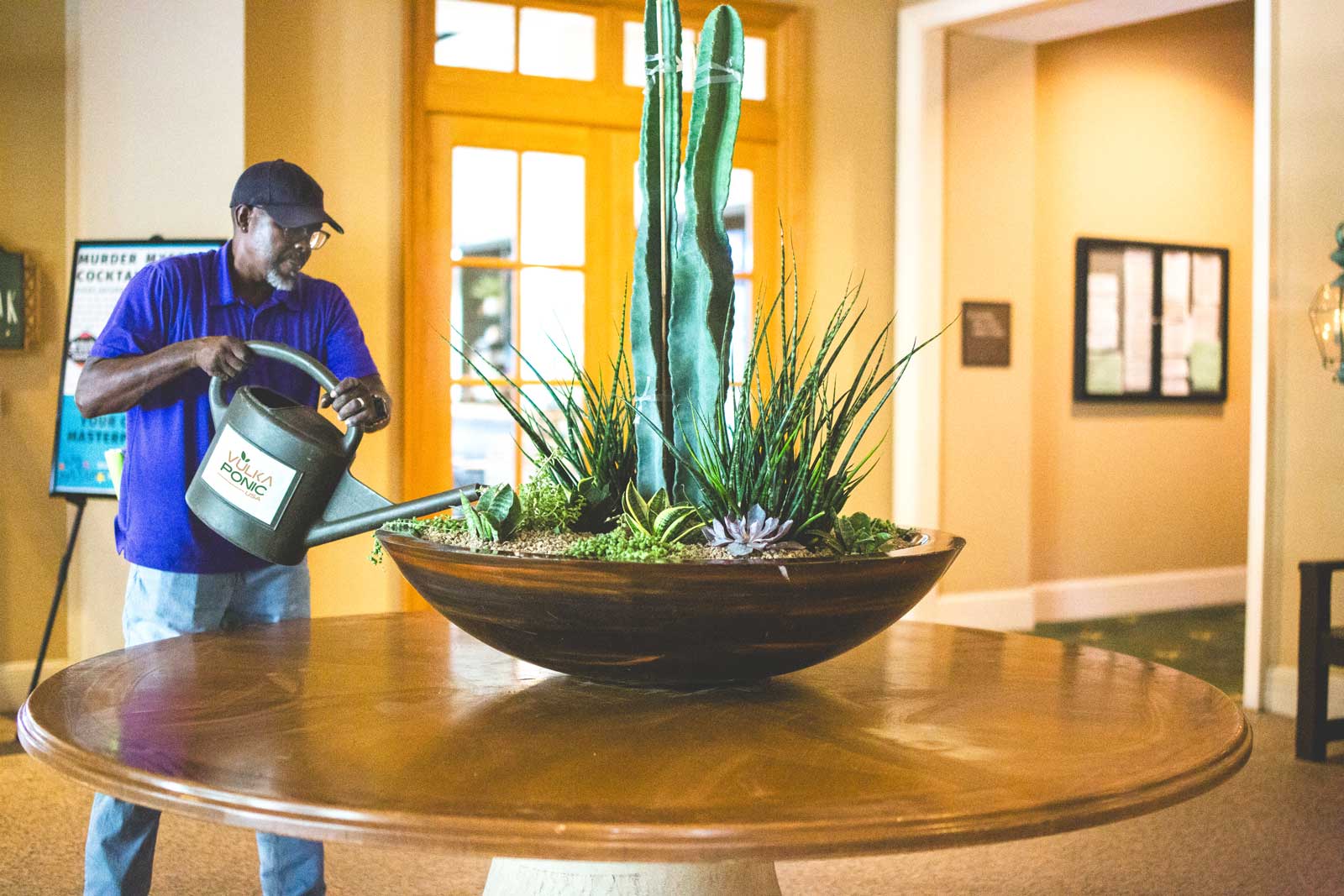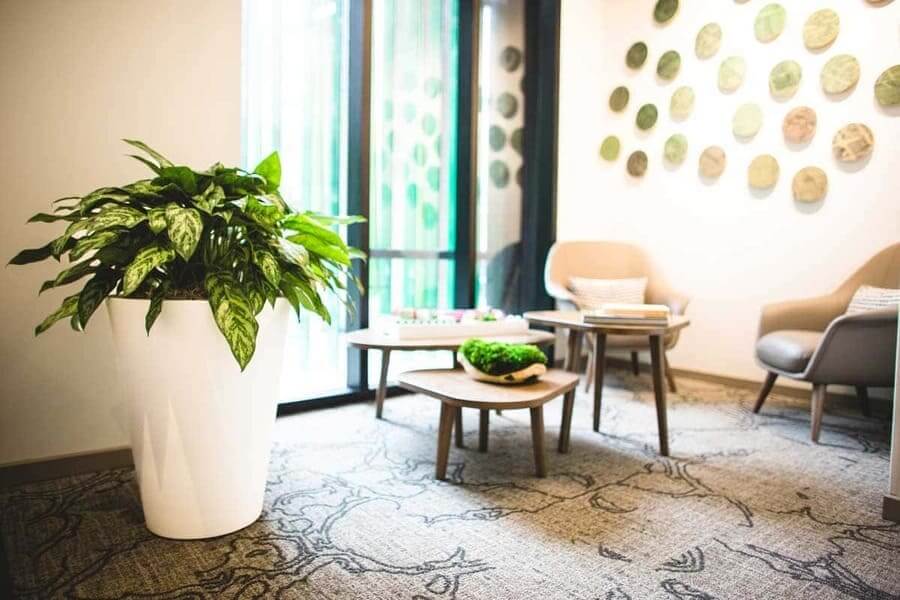The Common Mistakes You’re Making With Indoor Plants

Natura's expert plant care tips help you to avoid the common mistakes people make with indoor plants. Whether you're a plant enthusiast or a newbie, this article will guide you through the art of indoor plant care.
Have you ever brought home a beautiful indoor plant, only to watch it wither away before your eyes? Or maybe you've tried your hand at becoming a plant parent, only to end up with a jungle of dead leaves and wilted stems? Well, you're not alone! In fact, indoor plant care is an art form that can take some time and patience to master.
With a few simple tips from our experts at Natura, you can keep your indoor plants thriving and transform your space into a lush, green oasis. So, whether you're a beginner or an experienced plant enthusiast, join us as we explore the common mistakes people make with indoor plants and learn how to address them.
The Common Mistakes You’re Making With Indoor Plants
Unlock the secret to indoor plant success! Whether you're convinced that you have a "brown thumb" or just looking to level up your green game, this infographic reveals the top blunders that may be holding your plants back. Get ready to ditch the wilting woes and discover the secrets to creating a flourishing indoor oasis.

1. Assuming you have a ‘brown thumb’
First and foremost, don't let past plant failures keep you from greener pastures! It's easy to feel intimidated by the thought of bringing houseplants into your life, especially if you've had a less-than-flourishing experience in the past.
Perhaps you’ve bought a plant that eventually died, leading you to believe that you’re destined to keep fake plants forever. However, it's important to remember that no one is perfect when trying something new for the first time. So don't be afraid to try again! Additionally, by reading our tips, you can avoid making the same mistakes that may have caused your previous plants to perish.
2. Over or under-watering your plants
To water, or not to water? That’s the burning question when it comes to plant care and one that many people struggle with.
Those who love to watch their plants grow may have the tendency to over-water, thinking that more water equals faster growth. On the other hand, those who are a bit forgetful or have plants purely for aesthetics may end up under-watering, causing their plant to dry out.
It's important to understand that the amount of water a plant needs is directly related to the amount of light it receives (which we will get to in a moment). Plants that receive more light require more water, while those in low-light environments need less.
According to The Sill's website, there's a simple way to determine if you've over-watered your plant - by checking the soil's moisture level. If the soil feels damp or soggy several inches below the surface, it's a clear indication that you've given your plant too much water.
3. Not giving your plants the right amount of sunlight
Many plant parents fall into the trap of placing a plant in their home where it simply looks beautiful, But what they fail to consider is the amount of sunlight the plant is receiving. Neglecting the importance of lighting is one of the most common mistakes that leads to the untimely demise of many plants.
The Sill breaks it down for us: plants typically fall into one of three categories when it comes to light requirements - bright light, medium light, or low light. But what do these categories actually mean? Well, if your plant requires bright light, it means it needs around six hours of direct sunlight each day (like when placed in a sunny window). Medium light indicates that there's something between the plant and the sun, such as a curtain or sheer shade. And for low light plants, they should be kept away from direct light sources and are best suited for rooms with artificial lighting.
Want your plants to thrive? Here's a pro tip: understanding the relationship between water and light is key to providing your plants with the proper care they need.
Get personalized guidance on selecting the perfect plants for your space and expert advice on watering and lighting by speaking to one of Natura’s plant specialists.
4. Not cleaning your plant's leaves
Just like having a great shower or tidying up your living space, it's essential to show some love to your plant's leaves. Neglecting to clean them can lead to a buildup of dust and grime, obstructing the plant's ability to absorb sunlight and vital nutrients. But don't worry, it's a simple fix. All you need is a damp cloth and a gentle touch to wipe down your plant's leaves. Alternatively, you can also use a horticultural oil for cleaning and shining those leaves.
5. Ignoring plant pests
As a plant parent, you know that pests and diseases can wreak havoc on your green babies. Don't make the mistake of turning a blind eye to the problem, as it can quickly infect your other plants. Take swift action by isolating the affected plant and placing it in quarantine.
If you notice pests on your plants, the first step is to gently wash them off with a shower nozzle. Cleaning the leaves will help prevent the pests from spreading. You can also use horticultural oil to prevent pests from infesting your plants. Alternatively, soapy water is also effective in keeping pests away and killing them by suffocation.
If these methods don't work, you can use diluted Neem oil. However, be sure to protect your plant from the sun when using this harsher solution. Once the plant dries, you can bring it back inside. If Neem oil doesn't work, you can use alcohol on a Q-tip.
As a last resort, you can use a triple-action insecticide, but be careful not to spray it indoors as it can be harmful to humans and pets. This method is typically recommended for outdoor plants and will kill any bugs on the plant.
6. Not paying attention to the humidity levels in your home
Maintaining the right humidity levels is crucial to ensure that your indoor plants flourish, particularly when the chilly and dry months come around. A common mistake plant owners make is ignoring their humidity levels. As seasons change, the humidity levels in your home fluctuate. According to Bloomscape, the ideal humidity for houseplants can be 40-60% higher than the humidity levels found in our homes.
Thankfully, keeping your home's humidity at the optimum level is easily achievable with a humidifier. Simply invest in one, and you'll have a straightforward way to ensure that your plants are getting the TLC they need.
Helpful Hint: We highly recommend a cool mist humidifier. Rather than heating things up, this nifty device introduces a refreshing burst of moisture into the air. Be mindful of its placement, though, as you don't want to aim it directly at any of your precious plants. We’ve noticed that some people point the humidifier right at their greenery, but we advise against this. Infusing leaves in too much water can lead to leaf rot, and excess moisture creates a breeding ground for unsavory fungal infections. However, if you do choose to use a humidifier in your plant paradise, your flora and sinuses will thank you for it!
7. Assuming succulents don’t need to be watered
It's a common concern we hear all too often: "My succulents don't look very happy, and I haven't watered them for about three weeks. What gives?"
The thing is, contrary to popular belief, succulents aren't "no water" plants – they're actually more like "low water" plants. So, what's the secret to happy succulents? Simply water them when the soil is entirely dry. But, be sure not to leave the soil parched for long stretches of time either. Leaf & Clay provides some excellent guidelines when it comes to caring for succulents.
8. Purchasing plants that don’t suit your lifestyle
With the growing trend of indoor plants, it's not uncommon for beginners to hastily purchase gorgeous plants without understanding their specific care requirements.
One of the biggest blunders that plant newbies make is selecting plants that aren't compatible with their lifestyle. If you're always on the go or have a busy schedule, low-maintenance plants are your best bet. For those residing in dimly-lit homes, low-light plants are a wise choice, while pet owners should opt for non-toxic plants.
9. Pruning too much
While pruning can be a beneficial practice for promoting healthy regrowth in plants, it's crucial to exercise caution and avoid going overboard. If you're new to pruning, it's easy to make the mistake of taking too much off. Removing more than three-quarters of a plant's foliage can spell trouble, and it may never fully bounce back. To avoid this, it's best not to remove more than half of the foliage. Keep in mind that it's wise to trim away any brown leaves and preserve healthy growth. In many instances, only minimal pruning is necessary for a plant's well-being.
10. Being too hard on yourself when your plants don’t grow
For those new to the world of indoor plant care, the slow pace of growth can be a bit of a surprise. It's easy to throw in the towel when your first plant doesn't make it, but here's a little secret: it's okay to mess up!
In fact, the process of learning and making mistakes can be an enjoyable and fulfilling part of the journey. So, be curious and embrace the trial-and-error process. Sure, you might end up killing ten plants before finding your groove with five, leaving a trail of destruction in your wake. But that's okay. Correct your course, and allow yourself to learn and grow alongside your plants. Don't over-prepare or stress yourself out. This is a personal adventure of self-discovery, where you'll fall into a rhythm and establish a bond with your plants. Consistency is key, as it allows your plants to acclimate to your care routine. Remember that there is room for error - you're only human, after all.
Now that we've uncovered the not-so-green thumb habits that may be holding your indoor plants back, it’s time to turn over a new leaf on your plant care routine. Let’s explore some products that can help you to give your green darlings the TLC they deserve.
Products that can help make plant care easier
1. Soil probes
Soil probes are the perfect tool for those who are looking to take their plant care to the next level. These probes are designed to be pushed into the soil of your plants to record the moisture levels and nutrient conditions. While the old-fashioned way of prodding with a finger might work for some, soil probes offer a more accurate and precise method of determining soil moisture levels.
At first, using soil probes can seem daunting and confusing, but with a little practice, anyone can master them.
2. Grow Lights
If the sun isn’t on your side, grow lights can save the day. Unlike the light bulbs typically used in chandeliers or sconces, grow lights emit a spectrum of light that mimics that of the sun. When choosing grow lights, look for boxes with detailed descriptions to ensure you're getting the right type for your plants.
We suggest opting for LED full-spectrum white lights that offer the precise amount of light necessary for your plants to flourish. Additionally, these lights are ideal for those who are photosensitive or prefer a more subdued, natural light source in their living spaces.
3. A plug-in timer
Another useful tool to purchase along with your grow light is a plug-in timer. If you're prone to forgetting to turn on or off your grow lights, a timer can help ensure your plants get the right amount of light each day.
4. Mosquito bits
Say goodbye to pesky fungus gnats that are constantly bothering your beloved houseplants. The solution to your problem lies in a humble yet effective ingredient: mosquito bits.
With just a sprinkle of 1-2 teaspoons of dry mosquito bits in small pots or 1 tablespoon in larger pots, you can eliminate fungus gnats for good. As you water your plants, the mosquito bits will release a compound called Bacillus thuringiensis israelensis (BTI) into the soil, which acts as a natural assassin to the fungus gnat larvae.
Using mosquito bits for plants not only eradicates fungus gnats but also provides an eco-friendly solution. It's an easy and convenient way to protect your plants without exposing them to harmful chemicals.
5. Micronutrients
If you want your plants to reach their full potential and flourish, you need to make sure they're getting the essential nutrients they need to grow and thrive. Micronutrients are a key component of a plant's diet, and they play a crucial role in ensuring that your plants remain healthy and productive.
One of the most effective ways to boost your plant's micronutrient intake is by using SuperThrive - a plant growth stimulant that's packed with vitamins and minerals. This concentrated solution acts as a superhero for your plants, providing them with all the essential nutrients they need to achieve optimal growth and health.
You can also create a natural compost using readily available ingredients from your kitchen. Coffee grounds and eggshells are two fantastic additions that significantly boost the nutrient content and improve the overall quality of your compost. When incorporated into the composting process, it contributes to healthier plants and enriched soil.
6. Horticultural oil
This is another secret weapon in your plant care arsenal. Horticultural oil is a solution that is specially designed to combat insects, mites, and some plant diseases, leaving your plants healthy and prospering.
Made from refined petroleum products, horticultural oil is not only a powerful pest control agent, but it's also an excellent tool for cleaning plant leaves. Its gentle formula can remove dirt, dust, and debris, giving the leaves a fresh, shiny look.
When using horticultural oil, it's important to follow the instructions carefully, as too much can damage the plant's leaves. A delicate wipe-down with a soft cloth soaked in the oil is all it takes to keep your foliage clean and happy.
As the saying goes, "If at first, you don't succeed, try, try, and try again." This is especially true when it comes to caring for indoor plants. Remember, even experienced plant parents make mistakes, so don't be too hard on yourself if a plant doesn't make it. By avoiding the common mistakes highlighted in this article, you can keep your indoor garden vibrant and strong for years to come.
With the help of Natura's expert plant specialists, a little bit of knowledge and A LOT of love, you can become a confident and successful plant nurturer in no time. And who knows, maybe you'll even inspire others to do the same and bring a little bit of nature into their own homes.
Looking for additional indoor plant care advice or have any concerns? Our team of experts are here to help! Connect with us today and we'll gladly assist you.




